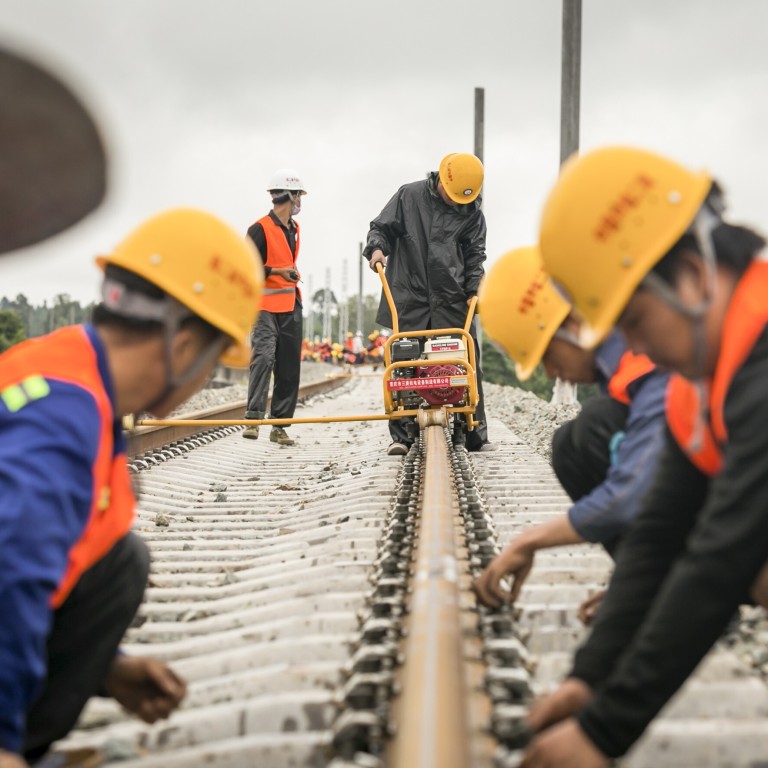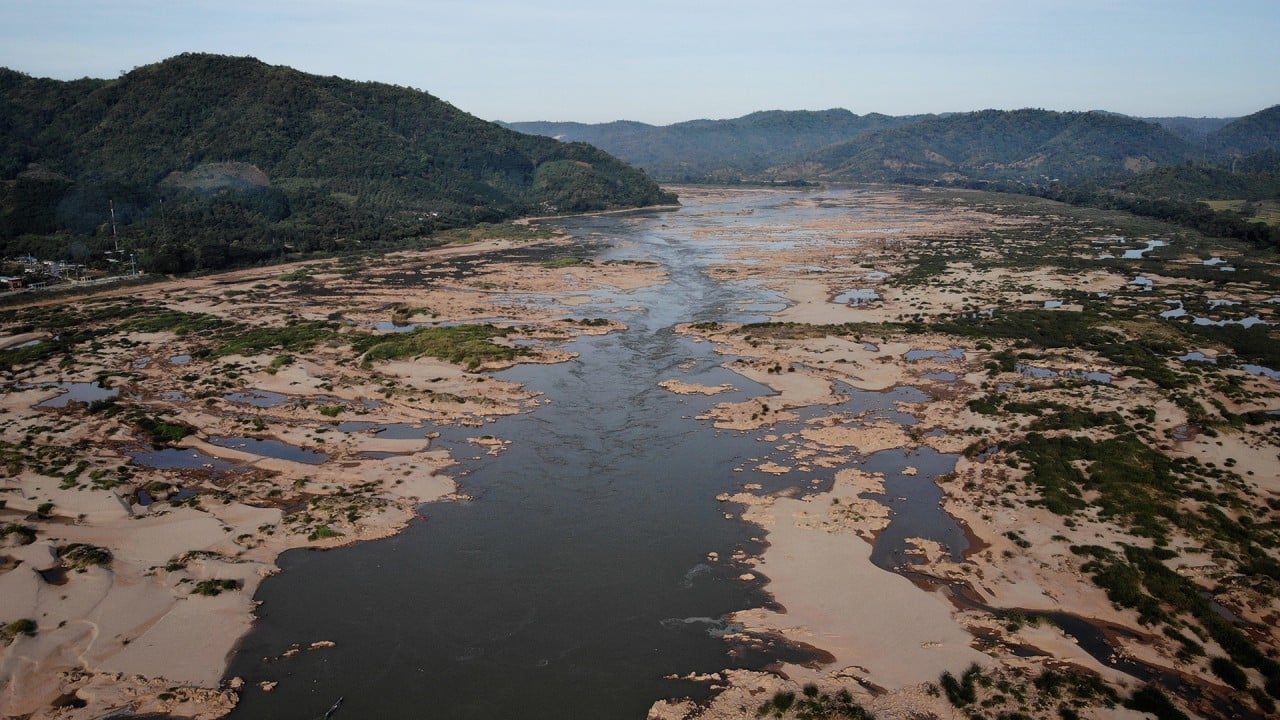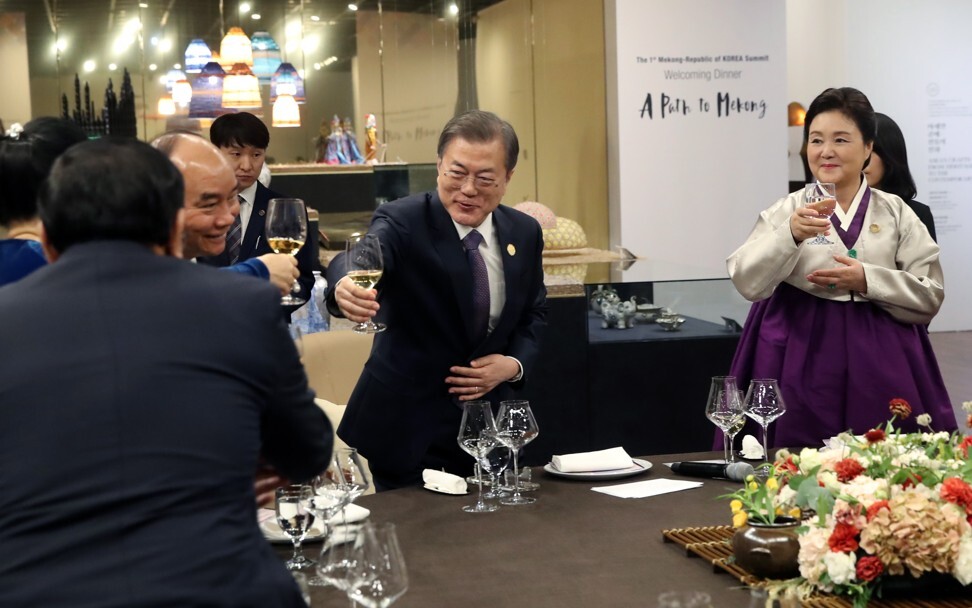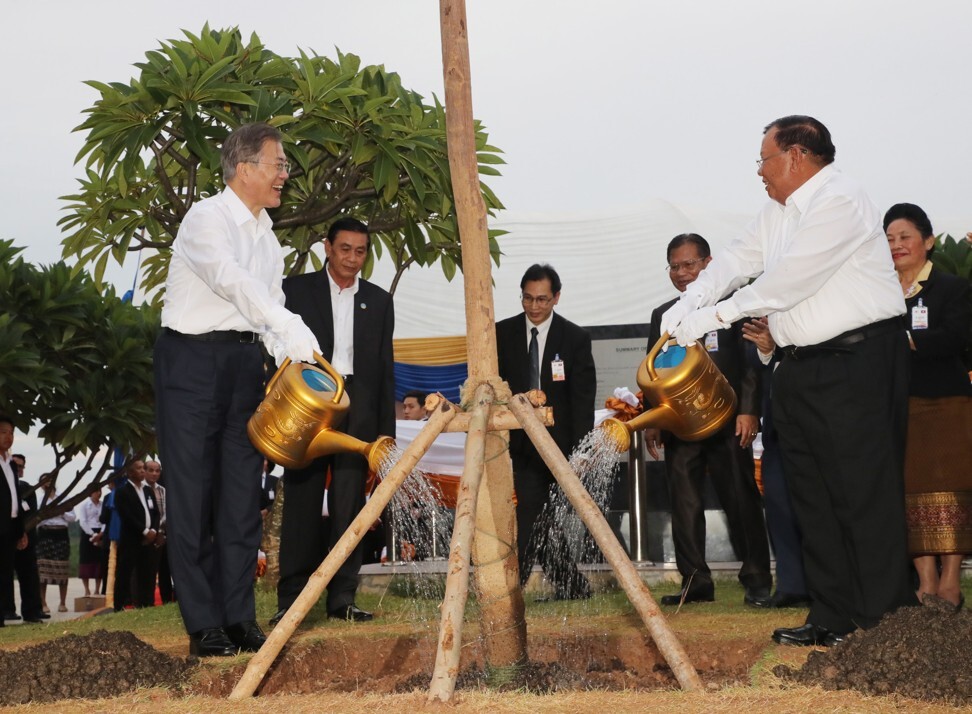
As China’s role in Mekong grows, Asean states must weigh ties with US, other powers
- China’s belt and road projects and its engagement with the region via the Lancang-Mekong Cooperation are fuelling a strategic competition in Southeast Asia
- The US, Japan and South Korea have deepened their commitment to Mekong nations, with each also affirming Washington’s policy of a free and open Indo-Pacific
Japan pledges aid for Mekong nations as China offers vaccine access
The United States
The US presence in the region is an important factor amid the ongoing major power shifts. Washington possesses various advantages not only from its military might, but also its economic strength and soft power. It has extensive security arrangements with most Southeast Asian nations, both in security alliance and partnership.
Within the Indo-Pacific strategy, the Lower Mekong Initiative (LMI) has been reinvigorated as a tool for Washington’s re-engagement with the subregion. The LMI, established in 2009, is a partnership between the US and Mekong nations to advance sustainable economic growth.
Too little, too late for the US around the Mekong? China’s already there
At the 10th LMI Ministerial Meeting in 2017, then-US Secretary of State Rex Tillerson proposed the “Mekong Water Data Initiative”, which aims to enhance the Mekong River Commission’s capabilities to share and use data about the river system.
“I am sorry to report that we’ve seen some troubling trends. We see a spree of upstream dam-building which concentrates control over downstream flows,” he said. “China operates extraterritorial river patrols. And we see a push to craft new Beijing-directed rules to govern the river.”
Pompeo also promised initial funding of US$45 million for various LMI projects, including education, clean drinking water, sanitation, better infrastructure, and environmental sustainability.

02:31
Have China’s dams been drying up the Mekong River or is low rainfall to blame?
In December 2019, the US-sponsored LMI Annual Scientific Symposium was held in Yangon to seek new solutions to cross-border environmental and health challenges.
The US has further offered an annual seed grant of up to US$15,000 for collaborative research projects. It is planning additional support for other activities, for example, US$14 million to counter transnational crimes, a conference on rules-based governance of trans-boundary rivers, a Mekong water data-sharing platform, and a new LMI public impact programme.
Why Asean should treat the Mekong like the South China Sea
Importantly, the LMI provides a platform to bring in Japan, South Korea, and other stakeholders to collaborate on projects.
For instance, the US partners with Japan to provide US$29.5 million to develop regional electricity grids. It is funding a project with South Korea on satellite imagery to improve flood and drought patterns assessment in the Mekong basin.
The US also supports Thailand’s recent plan to use the AyeyawadyChao Phraya-Mekong Economic Cooperation Strategy (ACMECS) as a platform to coordinate projects related to rural development and capacity-building.
Japan
The Japan-Mekong Region Partnership Programme in 2007 formalised Japan’s engagement with the subregion. In 2009, the first leaders’ summit adopted the Tokyo Declaration to establish “A New Partnership for the Common Flourishing Future” between Japan and the Mekong region. This commitment was renewed in 2012.
Tokyo’s move took place around the time Beijing embarked on the Belt and Road Initiative in 2014 and was preparing to form the LMC.
Japan to pay firms US$536 million to shift production from China
In 2018, Japan updated its strategy and aligned its policy with America’s Indo-Pacific strategy. Japan views that “the Mekong subregion … has the geographical advantage of receiving considerable benefits from the realisation of a free and open Indo-Pacific”.
At a meeting in November 2018, Abe and US Vice President Pence agreed to inject up to US$70 billion for infrastructure development in the Indo-Pacific region, especially on energy projects in Southeast Asia.
Japan also supports Thailand’s ACMECS programme, which it sees as a venue for policy coordination between Japan’s overseas development assistance and the needs of the subregional countries.
China still no match for Japan in Southeast Asia infrastructure race
Japan’s long-standing role in economic development, trade, investment, and development assistance are advantageous to its deeper engagement with the subregion. The acceptance of Japan’s role can be gleaned from the views of Cambodia, which China regards as an “ironclad” friend.
Cambodia was the first Asean country to welcome Japan’s free and open Indo-Pacific message and regards Tokyo as “one of the key strategic and economic partners in its diversification and hedging strategy”.
The regional acceptance of Japan is a hallmark of its soft power in the Mekong subregion, which helps to improve the power equilibrium.
South Korea
Of Seoul’s total overseas development assistance in 2018, one-quarter went to Cambodia, Laos, Myanmar, and Vietnam (CLMV).
‘Asean is no pushover’: Singapore, Indonesia officials dismiss talk of choosing US-China sides
Last September, Moon visited the subregion in a week-long tour, during which he said South Korea could support its human development and preparation for the fourth industrial revolution.
Two months later, Moon hosted the Asean-ROK Commemorative Summit in Busan, where he emphasised the Mekong-ROK Cooperation as a platform for deepening its engagement with the subregion, and launched the inaugural Mekong-ROK Summit.
Seoul to deepen trade with Asean as Japan disputes, tariff war drag on
Under South Korea’s NSP, there is some alignment with America’s Indo-Pacific strategy, whose principles of openness and inclusivity are viewed by Seoul to be beneficial to its economic interest.
The NSP also backs the Thailand-led ACMECS, under which it has pledged funds of US$1 million annually.
Benefits to Southeast Asia
The renewed engagement by the US, Japan and South Korea benefits Mekong states as it offers them more options to increase their economic development.
However, maintaining a fine balance among the major powers, especially between the US and China, is a growing challenge.
The recent online battle between the US and Chinese embassies in Bangkok is a case in point. The US embassy’s website ran an op-ed by its ambassador which questioned China’s water control in the Mekong upstream. The Chinese embassy carried a rejoinder justifying why the drought and flood could not be attributable to dams erected upstream in Yunnan Province.
Ultimately, the Mekong region will need to grapple with big power dynamics and send a clear signal to external powers that increasing cooperation with them does not equate to choosing sides.
Pongphisoot Busbarat is Lecturer at the Department of International Relations, Faculty of Political Science, Chulalongkorn University in Bangkok, Thailand. This article was first published in Iseas-Yusof Ishak Institute’s Perspectives Issue 2020/88 on August 20, 2020, and titled, Re-enmeshment in the Mekong: External Powers’ Turn.





